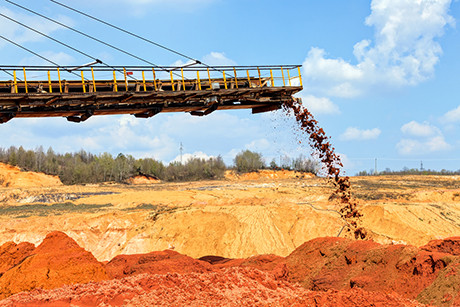Gold mining leading to felling of tropical forests in South America

Rising demand for gold is being met at the cost of some of the most biologically diverse regions in the tropics.
It has stimulated new gold mining activities which come with removal of vegetation, construction of roads and railways and mushrooming of unorganised settlements in the eco-sensitive regions.
Researchers from the University of Puerto Rico have shown that between 2001 and 2013 around 1680 square km of tropical forest was lost in South America to gold mining.
Around 90% of this forest loss occurred in just four areas and a large proportion occurred close to protected areas.
The researchers created a geographical database that highlighted the location of newly developed mines between 2000 and 2013.
This was cross referenced with the annual land cover maps showing the change of forest cover over the same period.
Results showed that over the 13-year period, 89% of forest loss occurred in just four regions: the Guianan moist forest eco-region; the Southwest Amazon moist forest eco-region; the Tapajós-Xingú moist forest eco-region; and The Magdalena Valley-Urabá region.
Around a third of the total deforestation occurred within a 10-km buffer zone around these areas, making them susceptible to the chemical pollutants from a mining area, says an IOP release.
Lead author of the research Nora L Álvarez-Berríos said, "Although the loss of forest due to mining is smaller in extent compared to deforestation caused by other land uses, such as agriculture or grazing areas, deforestation due to mining is occurring in some of the most biologically diverse regions in the tropics. For example, in the Madre de Dios Region in Perú, one hectare of forest can hold up to 300 species of trees."
Global gold production has increased to meet rising demand, increasing from around 2445 tonnes in 2000 to around 2770 tonnes in 2013. The rising demand has spurred dramatic increase in price — the price of gold increased from 165 pounds/ounce in 2000 to 858 pounds/ounce in 2013.
The findings are published in the IOP's Environmental Research Letters.
It has been shown that tropical deforestation has the potential to affect global rainfall patterns and temperatures, besides impacting local climes. These forests not only act as vital carbon sinks (or lungs) that take in carbon dioxide but also regulate interactions between the earth and the atmosphere.
They move more water than any other ecosystem on land and are central to the process of generating and regenerating moisture, so clearing these forests leads to a drying and warming effect, said the University of Virginia study.
In just a year, around 5,891 sq km of forests were cleared in the Brazilian Amazon alone.
© Copyright IBTimes 2025. All rights reserved.





















